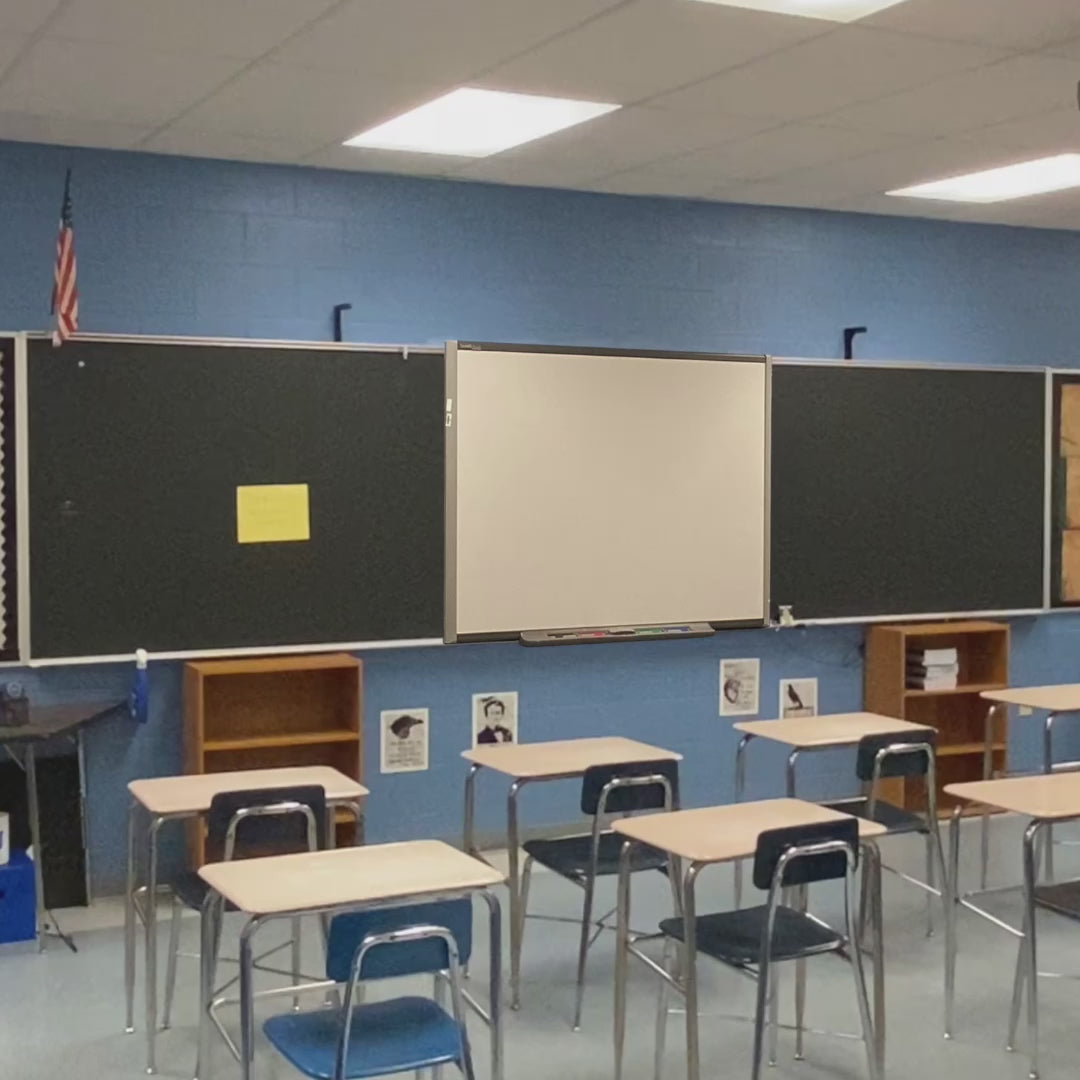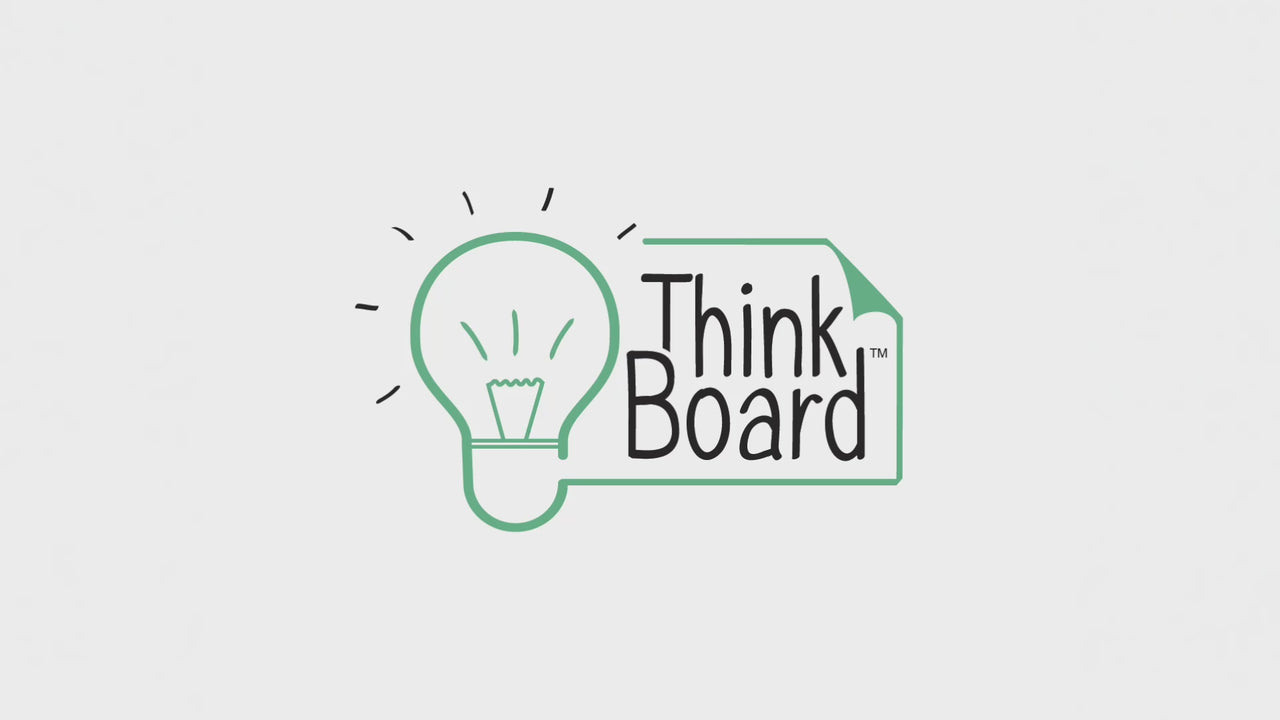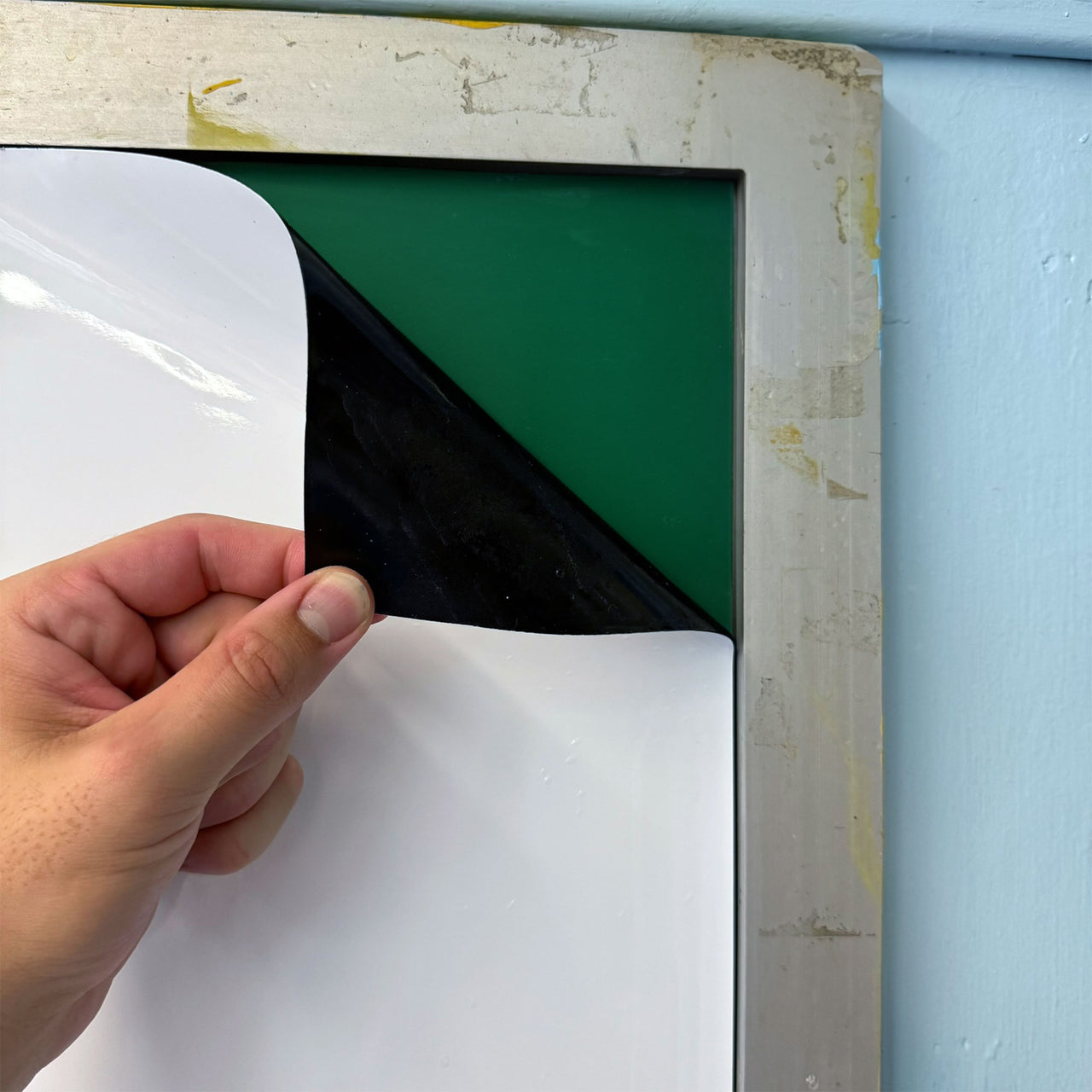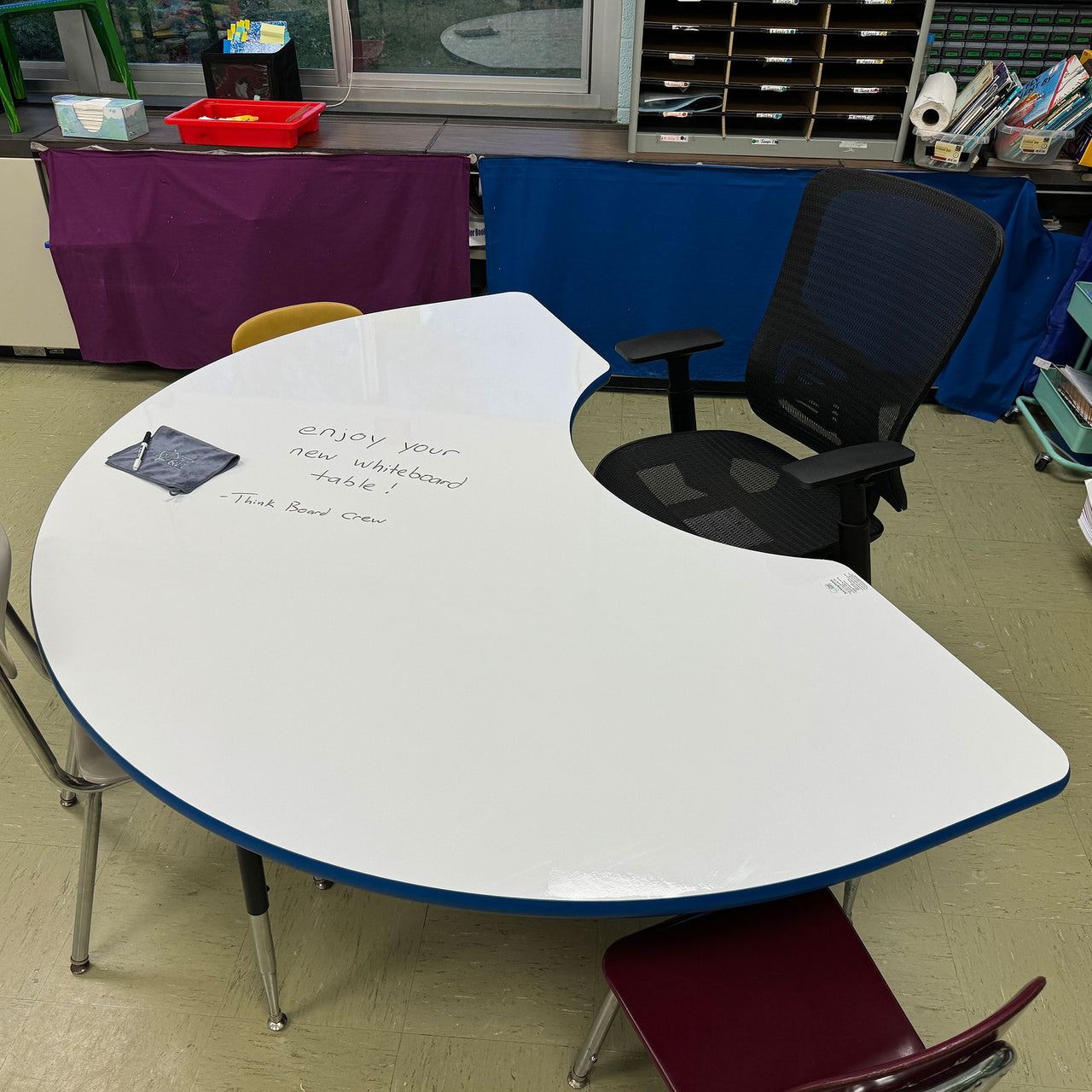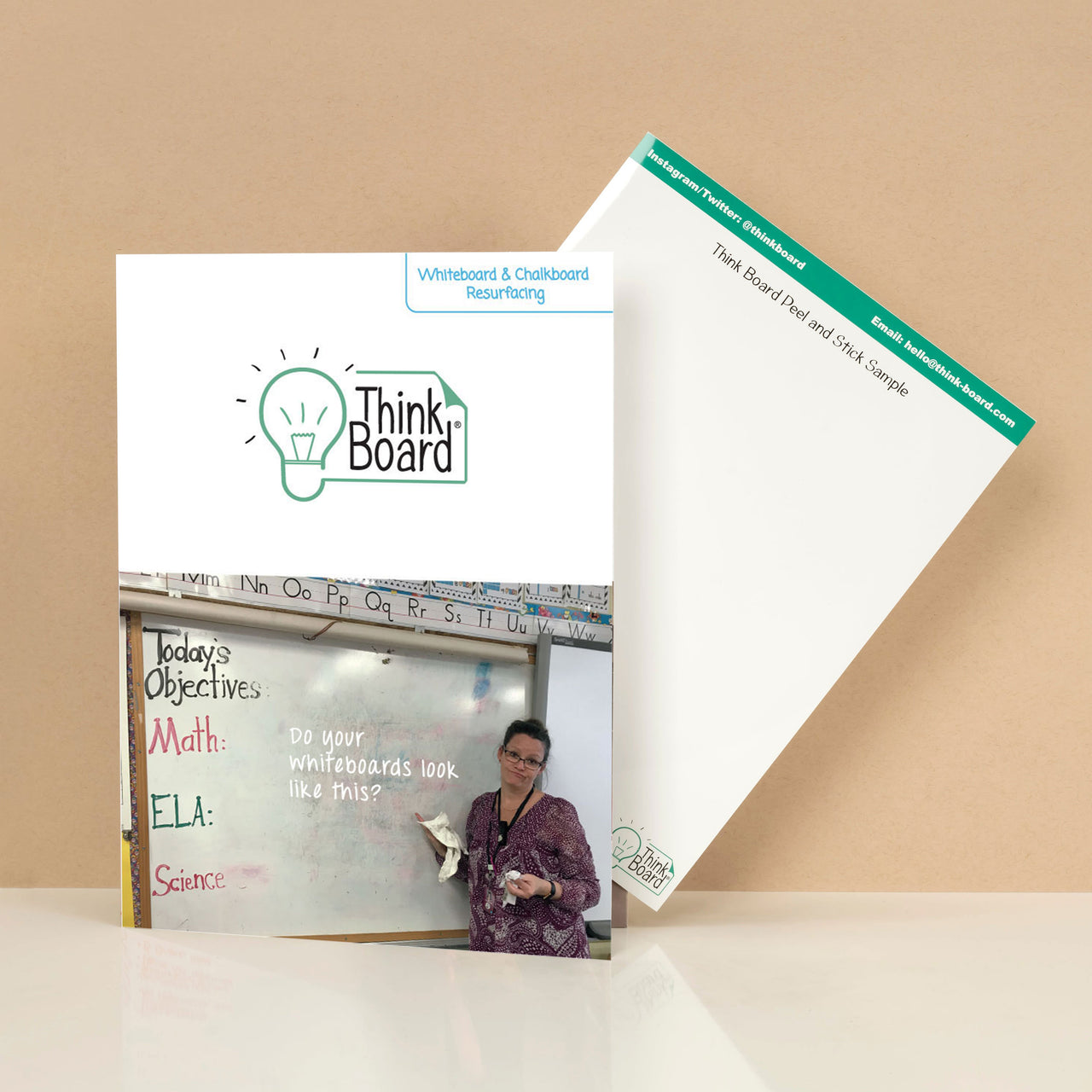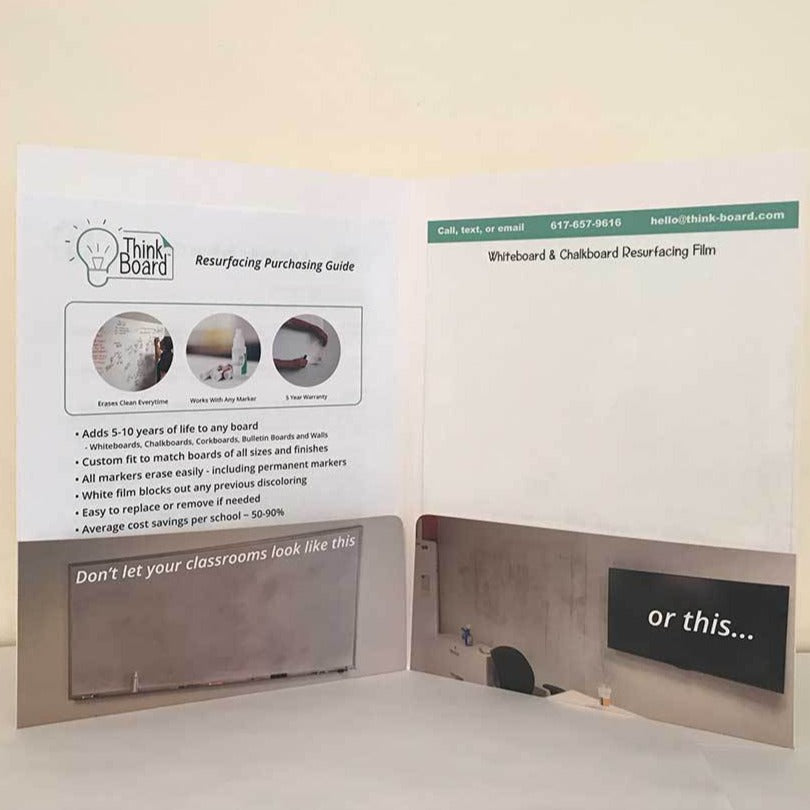Sustainable Home Solutions: Eco-Friendly Ideas for Every Room
Think your home is as green as it could be? Think again. From single-use plastics to energy-hungry appliances and disposable planners, the average household creates far more waste and emissions than most people realize. The good news? With a few practical swaps — starting with one room at a time — you can shrink your carbon footprint and make your home healthier, cleaner, and more sustainable.
Below, we’ve listed simple yet powerful ideas to help you turn every corner of your house into an eco-friendly space — starting with your walls, desks, and calendars.
Whole-Home Upgrades
Think Board Instead of Paper Calendars & Notes
Paper planners, sticky notes, and disposable to-do lists pile up quickly. Replace them with Think Board dry-erase film — reusable whiteboard surfaces that install directly on your wall, desk, fridge, or even a child's play table.
Use them for grocery lists, family calendars, daily routines, or brainstorming sessions. Bonus: Our Think Board Calendars are perfect for high-traffic areas like kitchens and offices, offering a clear, minimalist way to stay organized without the waste.
 Think Board turns your fridge into a reusable space for lists and notes.
Think Board turns your fridge into a reusable space for lists and notes.
Switch to LED Lighting
LED bulbs use up to 80% less energy than traditional incandescent bulbs and last much longer. It’s one of the quickest ways to reduce both electricity bills and landfill waste.
Smart Thermostats
A smart thermostat automatically adjusts heating and cooling to your schedule, helping you avoid energy waste — especially in rooms you’re not using. Some models even give you monthly energy reports to track your impact.
Low-VOC Paints
Painting a room? Choose low- or zero-VOC (volatile organic compound) paints. They release fewer chemicals into the air, making them healthier for both your family and the planet.
Kitchen
Reusable Food Storage
Replace plastic wrap and disposable containers with beeswax wraps, silicone bags, or glass storage jars. Not only do they last longer, but they also keep food fresher and reduce your trash load.
Compost Station
A simple countertop compost bin can turn food scraps into nutrient-rich soil. It’s a small addition that makes a big environmental impact — especially if your town offers compost pickup or you have a backyard garden.
Energy Star Appliances
Upgrade to appliances that use less energy and water. Energy Star certified dishwashers, refrigerators, and stoves help lower your utility bills while reducing carbon emissions.
Bathroom
Water-Saving Fixtures
Install low-flow showerheads, aerated faucets, and dual-flush toilets to reduce daily water usage without sacrificing performance.
Bar Soap & Refillable Products
Skip the plastic bottles and choose bar soaps, shampoo bars, or refillable dispensers. They’re less wasteful and often made with cleaner, more natural ingredients.
Bamboo Towels & Recycled Paper
Make the switch to bamboo-based paper products and towels — they grow faster, use fewer resources, and are fully biodegradable.
Kids’ Room or Playroom
Think Board Wall for Creative Play
Instead of tearing through stacks of paper, give your kids a Think Board wall where they can draw, practice writing, or play logic games. It’s perfect for open-ended play and keeps their creativity flowing — without the mess.
 Think Board turns any wall into a reusable creative space for kids.
Think Board turns any wall into a reusable creative space for kids.
Toy Swaps & Secondhand Finds
New doesn’t have to mean brand-new. Rotate toys with friends or shop secondhand to reduce waste and save money.
Natural Fiber Rugs & Non-Toxic Paints
Opt for organic cotton, jute, or wool rugs instead of synthetics, and avoid VOC-heavy paints in play areas to keep indoor air safer for growing lungs.
Home Office
Think Board Desk Film or Wall Planner
Cut back on paper waste with a Think Board dry-erase setup for your desk or wall. Brainstorm, plan, and organize your day visually — and reuse it again and again.
 Track personal goals sustainably with a Think Board dry-erase wall planner.
Track personal goals sustainably with a Think Board dry-erase wall planner.
Digital File Storage
Ditch the printer when you can. Cloud storage solutions like Google Drive or Dropbox keep your files organized without consuming paper or ink.
Energy-Efficient Power Strips
Smart power strips prevent electronics from drawing power when they’re not in use, reducing your energy bill without changing your routine.
Outdoor Spaces
Rain Barrels
Collect rainwater from your gutters to hydrate your garden — a sustainable and cost-effective way to reduce water usage.
Native Plants & Pollinator Gardens
Choose plants suited to your region's climate and soil. They require less watering, fewer pesticides, and attract beneficial insects like bees and butterflies.
Solar-Powered Outdoor Lights
Skip the wiring and electricity. Solar garden lights charge during the day and light up your yard at night — totally free and eco-friendly.
🎯 Final Thoughts: A Greener Home Starts with One Small Change
Making your home more sustainable doesn’t require a full renovation or off-grid lifestyle. In fact, the most impactful changes often start small — with what’s already on your walls, in your drawers, or sitting on your desk.
Whether you’re swapping chalkboards for Think Board surfaces, composting scraps, or just switching out your soap bottles, every upgrade matters. Choose the tips that fit your lifestyle, room by room, and you’ll be well on your way to a healthier, smarter, and more sustainable home.


